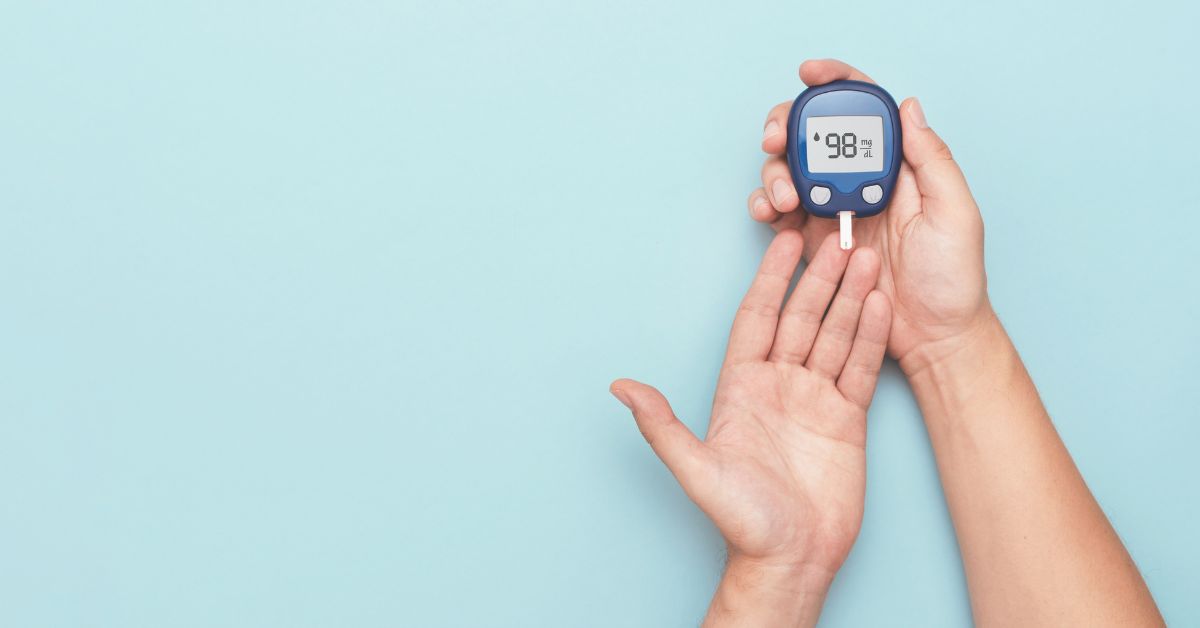Diabetes is a chronic health condition or a metabolic disorder that develops when the level of your blood glucose or blood sugar is too high. Several blood tests are available to determine your blood sugar level, including the HbA1C, postprandial, and fasting blood sugar tests.
Let’s discuss blood sugar levels and blood tests to determine diabetes.
Table of Contents
What is the Blood Sugar Fasting Level?
Normal sugar levels in human body The normal sugar level while fasting should be at about 99 mg/dL. However, pre-diabetes is a condition that occurs when a person’s blood sugar levels reach between 100 and 125 mg/dL. And when the blood sugar level rises to 126 mg/dL or greater, it indicates that a person has diabetes.
What is the Normal Fasting Blood Sugar Level by Age?
According to research, the normal blood sugar level varies from person to person, and from age to age. Blood glucose levels should range from 100 to 180 mg/dL for those under 6 years old, and from 90 to 180 mg/dL for those between 6 and 12 years old.
Young people between the ages of 13 and 19 should have blood glucose levels between 90 and 130 mg/dL, and adults should have blood glucose levels between 90 and 130 mg/dL.
To know your fasting blood sugar level, there are some tests like the common blood sugar test and HbA1C. These tests are done after 8 to 10 hours (overnight) of fasting.
What is the Standard Fasting Blood Sugar Test?
The standard blood sugar fasting test analyses your blood sugar level for 8 to 10 hours following a strict overnight fast. However, the test taker is only allowed to consume water, as any other food or drink is absolutely prohibited. Diabetes, gestational diabetes and prediabetes can all be diagnosed using this conventional and safe test.
Here is a table showing the fasting blood sugar level for people with diabetes, prediabetes and people who do not have this health condition:
| Result | Fasting Blood Sugar Test |
| Normal | 99 mg/dL or below |
| Prediabetes | 100 to 125 mg/dL |
| Diabetes | 126 mg/dL or above |
From the above table, it is clear that if you have a blood sugar level of 126 mg/dL or above, then you have diabetes.
What is the A1C test? or What Do You Mean by the HbA1C Test?
The HbA1C or A1C test is a significant and unique type of blood sugar test that determines a person’s average blood sugar level over the preceding three months. Sugar and haemoglobin are combined when the blood carries them into your body. The HbA1C test calculates the amount of sugar that is combined with haemoglobin. It is recommended to maintain strict fasting of 10 to 12 hours before you proceed with the HbA1C test.
Here is the table showing what can be expected from your HbA1C test results.
Is a Fasting Sugar of 110 mg/dL Normal for a Person?
After the fasting blood sugar test, if you have sugar levels of 110 mg/dL, then this can be a symptom of prediabetes. Sugar levels less than 100 mg/dL are considered a normal condition. However, if you are able to follow a strict diet under proper medication, then you can successfully manage your diabetes
It is also observed that from dawn to the early morning (which means between 2 a.m. to 8 a.m.), the blood sugar level reaches the highest level in people with diabetes. This is called “the dawn phenomenon or the dawn effect”.
According to research, some counter-regulatory hormones like growth hormone, glucagon, cortisol, and epinephrine release overnight, which increase insulin resistance.
What are the Effects of Increasing Fasting Blood Sugar Levels?
It is usually observed that the blood sugar fasting level is highest during the day. People who do not have diabetes can tolerate these higher blood sugar levels as their pancreas is healthy and secrete enough insulin to counterbalance the elevated glucose level in their bodies. However, people with diabetes are unable to utilise their insulin properties because of improper pancreatic function. As a result, with time, they start experiencing severe hyperglycemic symptoms such as nausea, numb or tingling feet, weakness, fatigue, blurry vision, severe thirst (polydipsia), frequent urination (polyuria), etc.
Long-Term Effects Of A High Fasting Blood Sugar Level
If a person’s fasting blood sugar level increases significantly, it may become a concerning life-threatening event that would require immediate medical attention. Prolonged high fasting blood sugar levels can lead to severe complications, such as:
- Without sufficient insulin, the body begins to break down the fat bodies into acetone, acetic acid, and β-hydroxybutyrate, collectively called ketone bodies. These ketone bodies remain in the bloodstream, eventually developing a serious complication called diabetic ketoacidosis.
- Long-term high sugar levels can also damage the small as well as large blood vessels in the body, which can lead to increased chances of stroke and heart attack.
- Prolonged high sugar levels can affect the vital organs in your body, such as the heart, kidney, etc., and eventually result in their failure.
- Diabetes can also damage the eyes and severely impair vision or cause total blindness.
- Diabetes can also harm the body’s nerves and potentially cause other diabetes-induced complications.
How to Manage Your Fasting Blood Sugar Level?
Managing blood sugar levels can save you from diabetes-induced health complications.
Here are some guidelines for people with diabetes who are trying to find ways to manage their fasting blood sugar levels better.
- Include low glycemic index meals in your diabetes sugar free diet.
- Dinner should be low in carbohydrates and higher in fibre.
- Keep a two-hour window between each meal and avoid skipping any.
- After dinner, do some light physical activity like yoga, walking, or running as part of your regimen.
- Increase your water intake to stay hydrated all day.
- Get an adequate amount of sleep.
- Keep a chart to monitor your blood sugar levels. A portable glucometer can be used for the same purpose.
- Regularly consult a diabetologist who can assist you in modifying your medication regimen and dosage.
Since diabetes is a lifestyle condition, it is frequently very challenging for people to manage their blood sugar levels. But in recent years, many people are progressively altering their blood sugar levels and, thus, embraced a healthy lifestyle with the correct tools and thorough awareness of the illness.


